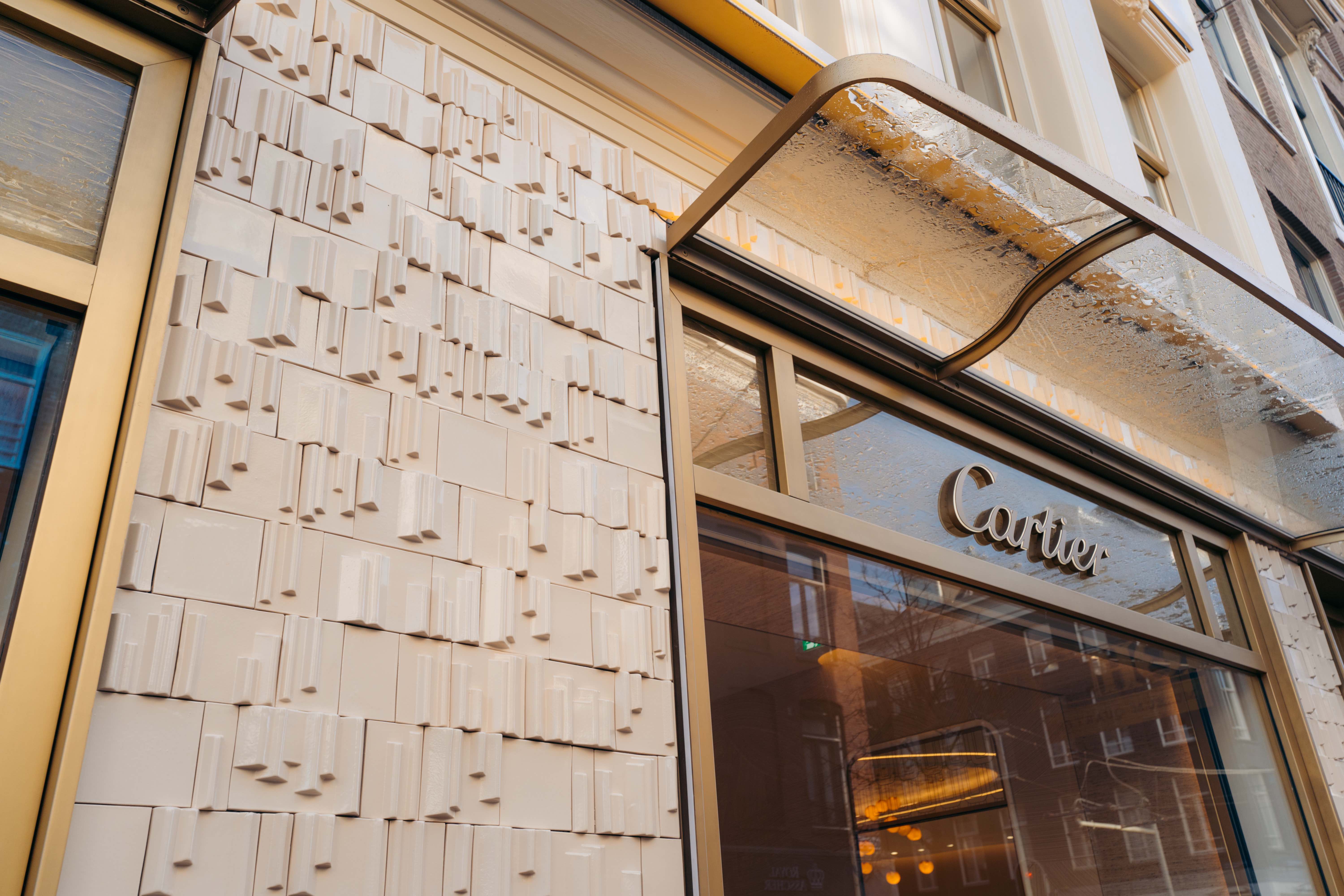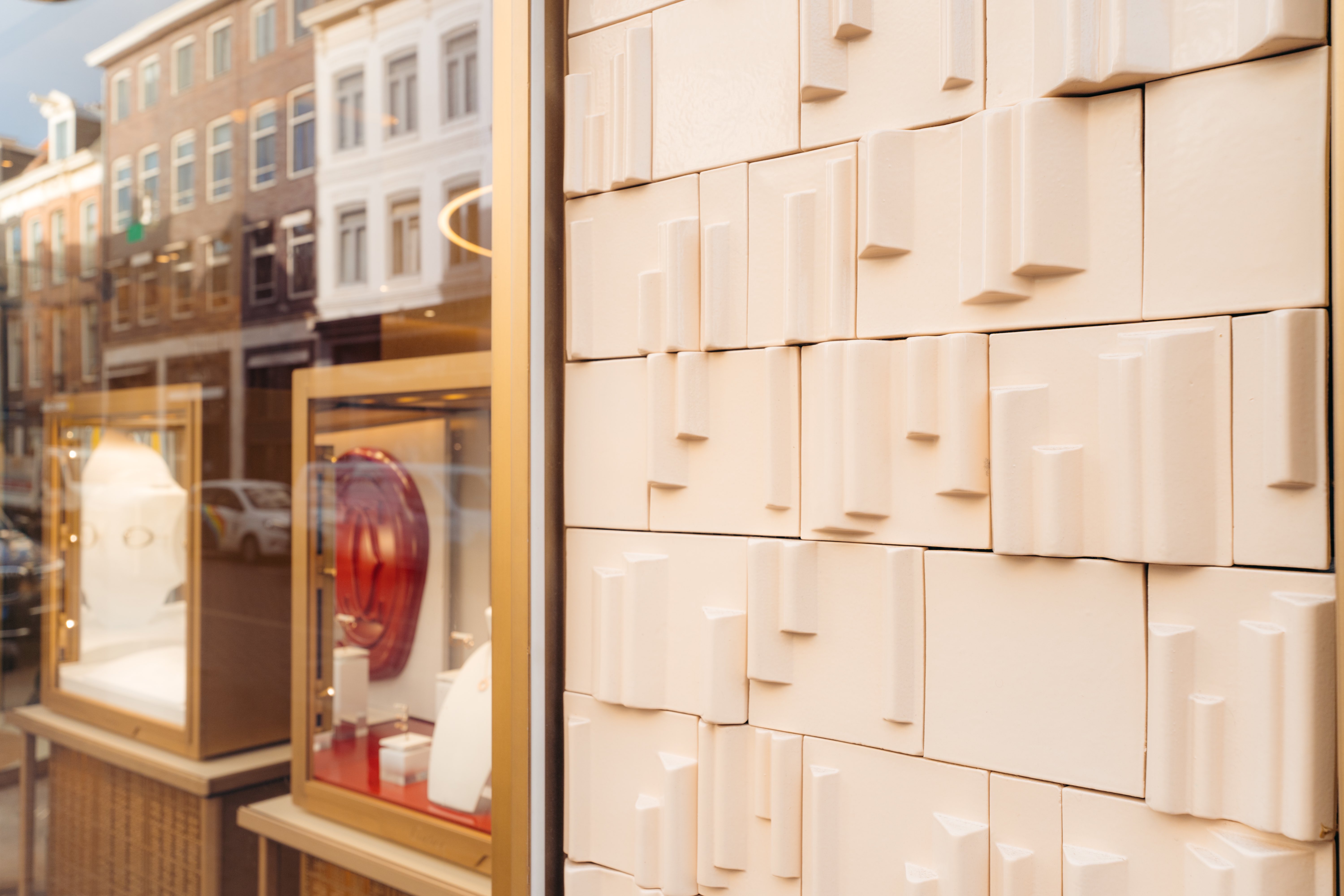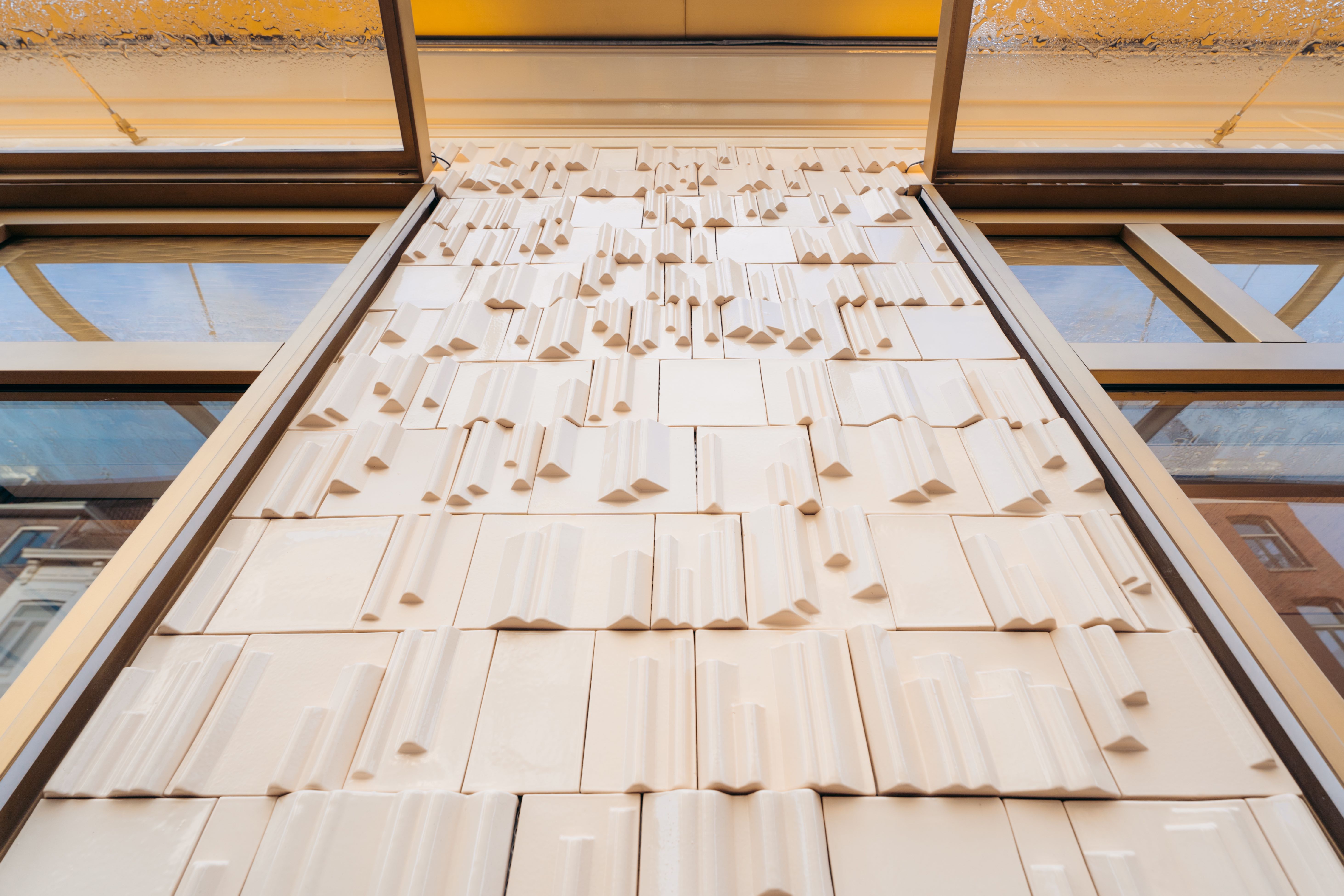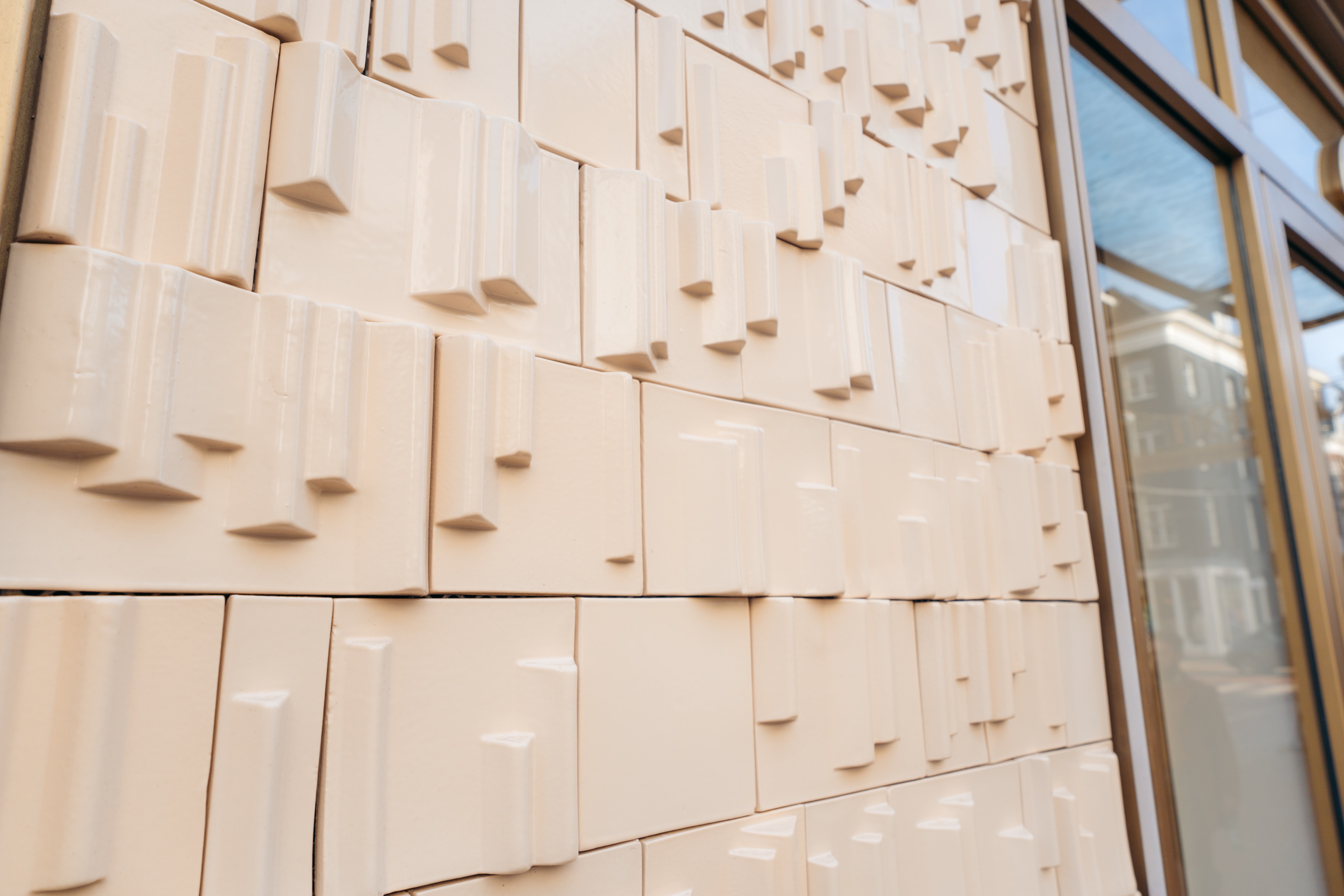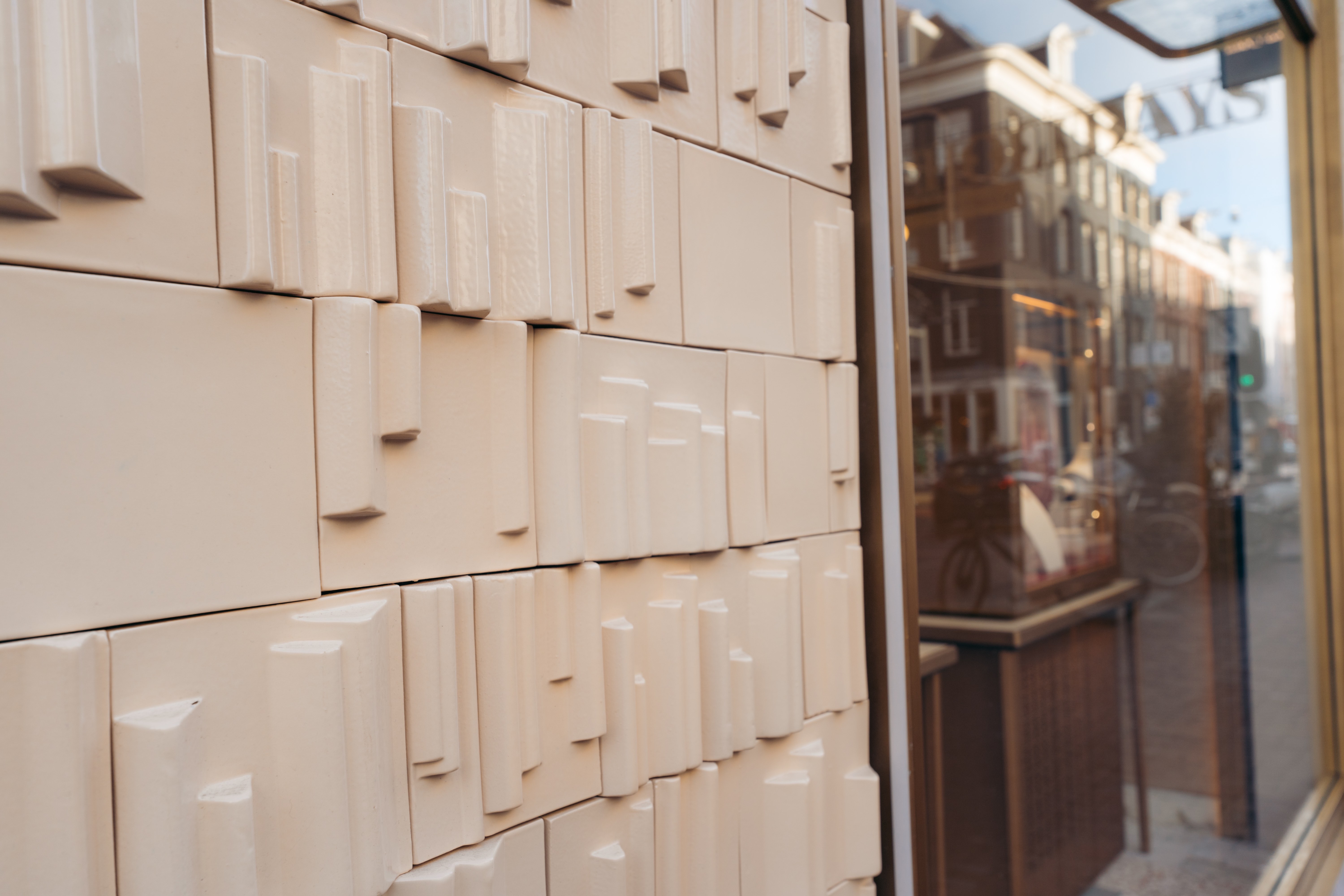MENU
Cartier Amsterdam
| Location: | P.C. Hooftstraat 129, Amsterdam |
| Architect: | Studioparisien & Eva Crebolder |
| Project type: | architecture |
| Material: | Tiles |
| Product: | 3,000 semi-handmade, frost-resistant façade tiles. In eleven different shapes ranging in sizes from 50x150mm to 200x150mm. Glazed in four different nuances of white. |
The bond between Cartier and the Netherlands dates to the beginning of the previous century. In 1925 Cartier’s most important jewelry was displayed at the Hotel Des Indes in The Hague. The first Dutch boutique of the luxurious brand opened its doors in 1975 in Amsterdam. In the following years, one could find their beautiful products at different locations in the Dutch capital. The most recent move is that to the P.C. Hooftstraat 129. A historic building that found its origin in 1875.
Studioparisien was responsible for designing the façade of the building as well as its interior. By collaborating with different local artists, the French-based studio wanted to combine Cartier’s French heritage with its endeavors in the Netherlands. One of these artists is Eva Crebolder.
For the façade of Cartier's Flagship store in Amsterdam, Eva created a tapestry in ceramic. The relief tiles are inspired by a metropolitan image, "corner views of Amsterdam buildings" and the familiar and intimate weave in Cartier's jewelry. Eva arranges patterns and rhythms, without repetition. They form a graphic fabric to bring together solidity and lightness. In the tapestry on the façade, the patterns shift due to the changing incidence of light. The cadence of the lines and the cool tactile skin help the work breathe. We are honored to have worked together in developing the tiles for the lower level of the façade.
Koninklijke Tichelaar produced approximately 3,000 semi-handmade, frost-resistant façade tiles. Eleven different shapes ranging in sizes from 50x150mm to 200x150mm were pressed out of high-quality clay. The next step in this process was to biscuit-fire the tiles at a temperature of around 1,175 °C, thereby making the form of the tile definite. After sorting the tiles accurately, we glazed them in four different nuances of white. Our lab plays an important role in defining the right glazes. This means that before glazing the tiles an extensive research process takes place in which multiple glazes are developed. The final glazes are then selected in collaboration with our client. Next, we single-fired the glazed tiles at a temperature of around 1,070 °C. The tiles beautifully express the design of Eva Crebolder when applied to the façade of the boutique. Are you interested in more of Koninklijke Tichelaar’s projects? You can find our most recent architectural projects here.

